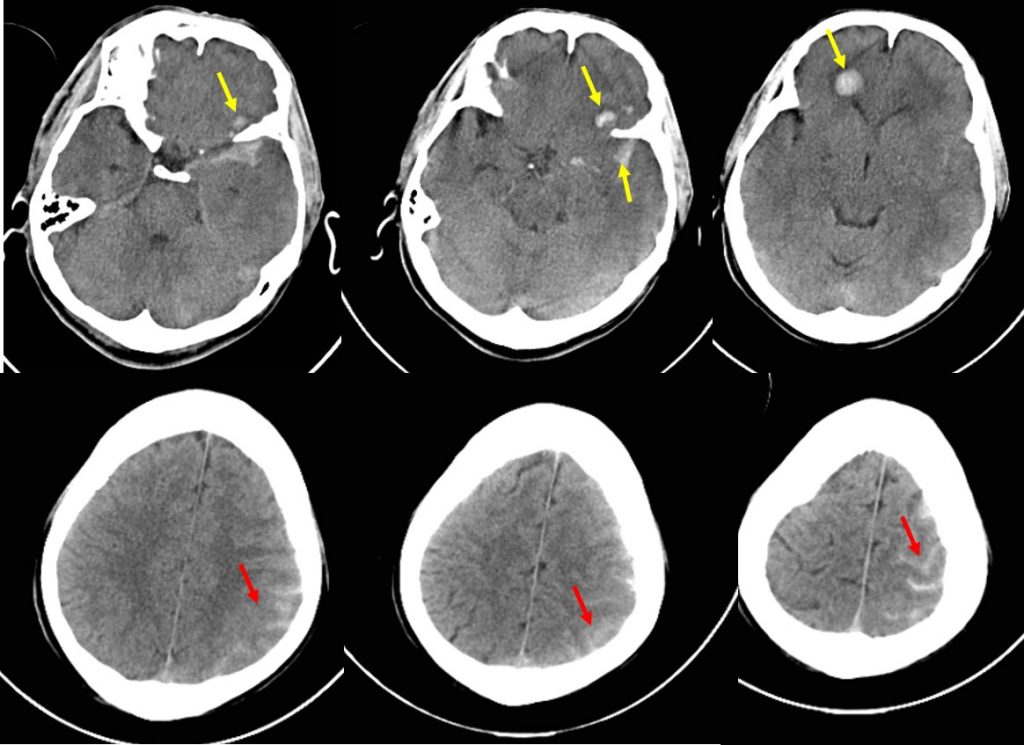Clinical:
- A 46 years old man
- Involved in motor vehicle accident
- History of loss of consciousness
- Complains of headache and persitent vomiting
- Clinical assessment in ED shows GCS 15/15, no neurological deficit

CT findings:
- There are multiple hyperdense foci at left frontal and temporal lobe (yellow arrows).
- The hyperdensities are of various sizes with minimal surrounding hypodensities.
- There are hyperdensities along the cerebral sulci at left frontoparietal region (red arrow)
- There is associated effacement of the cerebral sulci.
- No midline shift, no internal brain herniation
Diagnosis: Traumatic brain injuries (cerebral contusion and subarachnoid hemorrhage)
Discussion:
- Cerebral contusion also known as brain bruise occurs due to closed head injury against inner surfaces of the skull at the time of impact
- Usually at contrecoup site of the injury
- Location of cerebral contusion is at anterior base frontal, temporal lobes
- CT appearance show small, focal areas of petechial haemorrhage, peripherally located, multiple and can be bilateral. However CT scan can be normal, very subtle and/or odema on initial imaging. Over time, about half of the contusions evolve and grow larger in size.
- Traumatic subarachnoid hemorrhage (SAH) occurs in about 40% of patients with moderate to severe head injury is associated with a significant worse outcome
- Nearly all cases of traumatic SAH have other lesions to suggest traumatic cause
- CT findings of SAH is seen as linear areas of hyperdensities in the cerebral sulci and convexities, Sylvian fissures or basilar cisterns. Subtle SAH can be seen at interpeduncular fossa.
